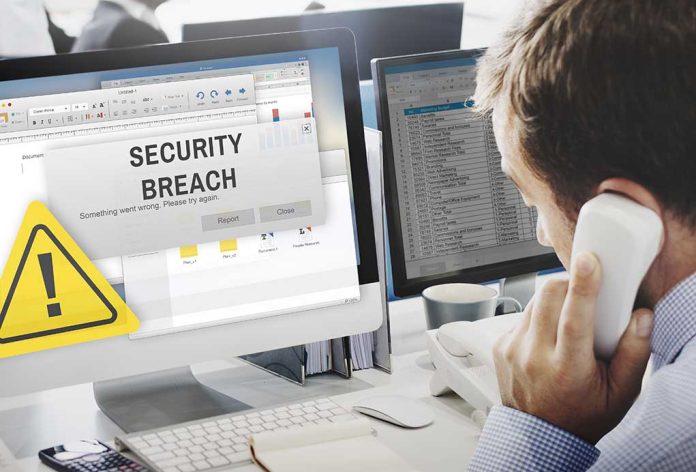
Microsoft disrupts a major cyber-heist operation that secretly infected almost 400,000 Windows computers worldwide with the devastating Lumma Stealer malware, designed to pilfer your bank accounts, passwords, and cryptocurrency wallets.
Key Takeaways
- Microsoft and global law enforcement agencies dismantled the Lumma Stealer malware operation that infected 394,000 Windows computers between March and May 2025
- The sophisticated malware steals sensitive data including banking credentials, passwords, credit card details, and cryptocurrency wallets
- Microsoft obtained a court order to take down approximately 2,300 malicious domains and seized five internet domains used by the cybercriminals
- The malware uses advanced techniques to evade detection, including phishing emails impersonating trusted brands, malvertising, and abuse of legitimate services
- Users are advised to strengthen security by implementing multifactor authentication and keeping system defenses updated
Widespread Digital Threat Targeting Americans
In a major cybersecurity operation, Microsoft has successfully disrupted a sophisticated malware network that infected nearly 400,000 Windows computers worldwide. The malware, known as Lumma Stealer, operates as a “malware as a service” (MaaS) offering that allows cybercriminals to subscribe to its capabilities. Between March 16 and May 16, 2025, this digital threat spread across global computer systems, targeting sensitive user information including banking credentials, passwords, credit card information, and cryptocurrency holdings. Microsoft’s Digital Crimes Unit collaborated with international law enforcement agencies to identify and dismantle the extensive infrastructure supporting this malicious operation.
Lumma Stealer has become a preferred tool for cybercriminals due to its sophisticated evasion techniques and broad targeting capabilities. The malware uses multiple attack vectors, including deceptive phishing emails, malicious advertising, drive-by downloads, and trojanized applications that appear legitimate. These attack methods allow the malware to bypass traditional security measures and install itself on victims’ computers without detection. Once installed, it begins harvesting sensitive information and transmitting it back to the operators through a complex command-and-control infrastructure hidden behind Cloudflare proxies.
Microsoft’s Coordinated Takedown Operation
Microsoft took decisive legal action against the cybercriminals behind Lumma Stealer, obtaining a court order from the U.S. District Court of the Northern District of Georgia. This legal authorization enabled Microsoft to take down approximately 2,300 malicious domains associated with the malware operation. The company didn’t act alone in this effort. The U.S. Department of Justice, Europol’s European Cybercrime Center, and Japan’s Cybercrime Control Center all participated in the coordinated global response, demonstrating the international scope of both the threat and the response.
“Microsoft Digital Crimes Unit (DCU) engineered tools that identify and map the Luma Stealer C2 infrastructure,” said Microsoft Digital Crimes Unit.
As part of the operation, the Department of Justice seized five internet domains that were critical to the malware’s operation. The FBI’s Dallas Field Office is actively investigating the case, working to identify and bring to justice those responsible for creating and distributing the malware. This comprehensive approach to combating cybercrime shows how government agencies and private technology companies are increasingly working together to protect citizens from digital threats that know no borders.
Advanced Techniques and Devastating Impact
Lumma Stealer uses sophisticated techniques to evade detection and maximize its effectiveness. The malware employs methods like “EtherHiding” and “ClickFix” to deliver its payloads while avoiding security detection. Once it infects a system, it targets multiple data sources including browser credentials, cryptocurrency wallets, various applications, user documents, and system metadata. This comprehensive data theft can have devastating financial and personal consequences for victims who may find their bank accounts emptied, identities stolen, or cryptocurrency wallets drained.
“Lumma Stealer emails impersonate known brands and services to deliver links or attachments,” said Microsoft Threat Intelligence.
The malware’s popularity among cybercriminals stems from its effectiveness and ease of use. As a malware-as-a-service offering, Lumma Stealer allows even relatively unsophisticated criminals to conduct high-impact cyber attacks. It has been adopted by several major threat actors, including ransomware groups like Octo Tempest and various Storm groups. These operators use the stolen information for further exploitation, selling it on dark web marketplaces, or using it to gain deeper access to corporate networks for more lucrative attacks.
Protecting Your Digital Life
Microsoft has provided extensive recommendations for Windows users to protect themselves from Lumma Stealer and similar threats. The company advises strengthening Microsoft Defender configurations, requiring multifactor authentication for all accounts, and using phishing-resistant authentication methods. Users should also maintain updated systems, be cautious about suspicious emails or download links, and use trusted security software. These layered defenses are crucial as cybercriminals continue to evolve their tactics and techniques.
“The growth and resilience of Lumma Stealer highlight the broader evolution of cybercrime and underscores the need for layered defenses and industry collaboration to counter threats,” said Microsoft. This incident serves as a stark reminder of the persistent digital threats facing Americans today. While Microsoft and law enforcement agencies work to disrupt malicious cyber operations, individual vigilance remains an essential component of cybersecurity. President Trump has consistently emphasized the need for stronger cybersecurity measures to protect American citizens and businesses from foreign and domestic cyber threats. As these attacks grow increasingly sophisticated, cooperation between government agencies, technology companies, and individual users becomes more critical than ever in maintaining our digital security.





